Building history
Villa Flora has had an eventful history. Built in the middle of the 19th century, it was converted into a house of art by Hedy and Arthur Hahnloser-Bühler beginning in 1898, before becoming a museum at the end of the 20th century. The latest chapter has now been written with the comprehensive renovation and construction of the garden pavilion – the Villa Flora is ready for the future.
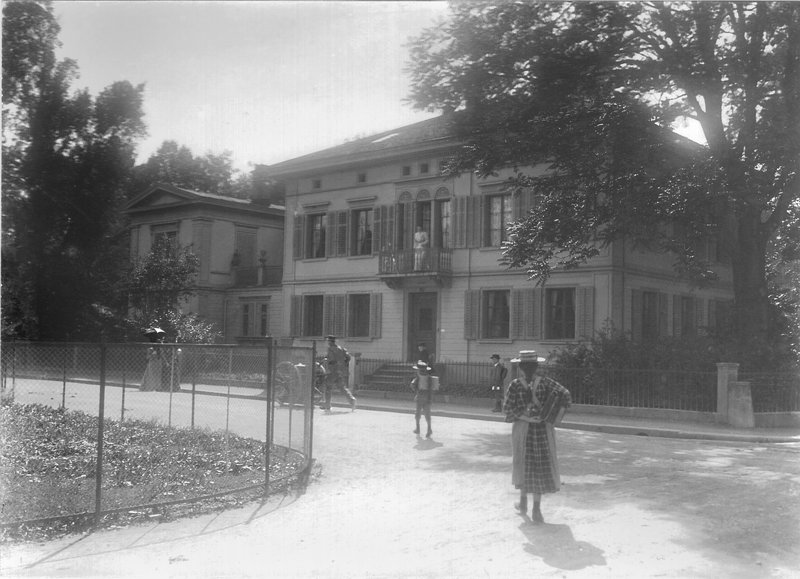
The Villa Flora around 1900
In 1858, Hedy Hahnloser's grandfather, Johann Heinrich Bühler, acquired the property with the Villa Flora, which had been built a good ten years earlier. At that time, there was still a small hut next to the classicist town villa. Johann Heinrich Bühler had this replaced by a 'coach house', which still stands next door today – right next to the new pavilion. To the east of the villa, he had a narrow, two-storey extension built in the style of the main house. On the first floor, this wing was connected to the villa via a corridor with an open terrace on the roof.
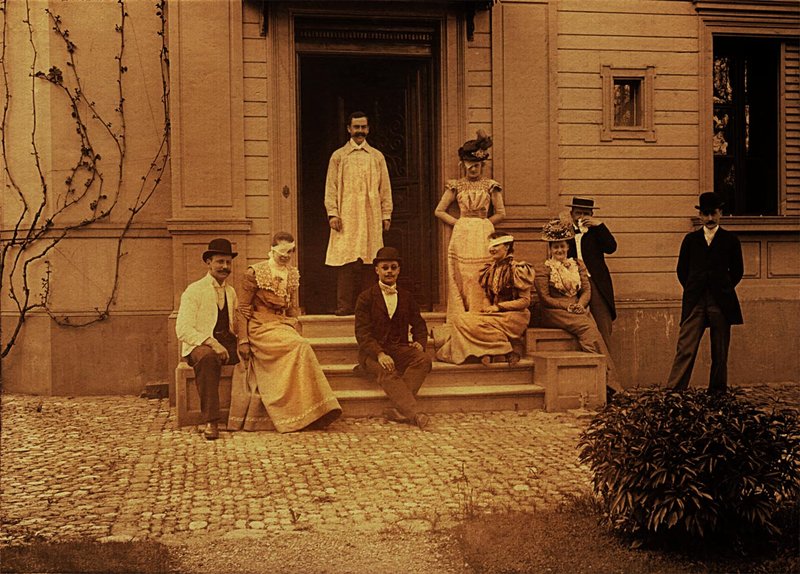
Arthur Hahnloser with costumed patients of his eye clinic in front of the Villa Flora
In 1898, Hedy Bühler married the ophthalmologist Arthur Hahnloser. Together they moved into the Flora, which they had bought from the family. In the eastern extension, they set up an eye clinic with an operating room, consultation and patient rooms, but also lived in the villa.
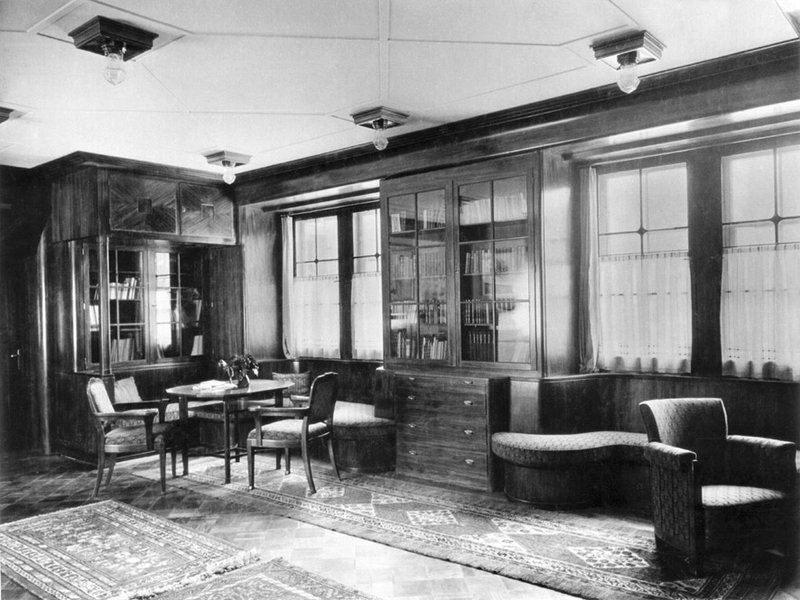
The salon in the Villa Flora in a historical photograph from 1908
In 1907, the eye clinic was relocated, so that all parts of the building were now available as living space. This gave rise to several renovations, starting with the salon, which was placed between the villa and the extension. The architect Robert Rittmeyer, a friend of the Hahnloser couple, and his firm Rittmeyer & Furrer were commissioned to carry out the work. Together with Hedy Hahnloser, he designed a modern living room, which met the latest standards in terms of materials and design. Actually, the salon was presented to the public before being installed in the Flora: As part of the First Zurich Exhibition of Interior Design, it was celebrated as a 'masterpiece of contemporary interior design'.
Over the following years, other rooms in the Villa Flora were refurnished and redesigned, with great importance being attached to the harmonious interplay of the individual elements. From the curtains to the furniture to the lamps, everything was purposefully designed – and rounded off with fresh flowers and high-quality paintings. The dining room, the library and the so-called Green Room were also furnished according to these principles and ideas. The lady of the house herself was in charge of the design: Hedy Hahnloser drew the designs for the lamps, wallpaper and furniture, which were then manufactured according to her plans.
Geometric shapes and right angles characterized Hedy Hahnloser's style. There are no flourishes in her designs, no false opulence or imitation of older styles, as was common in Switzerland at the time, but instead diagonals and squares, straight lines and simple shapes, which could sometimes also be floral in form.
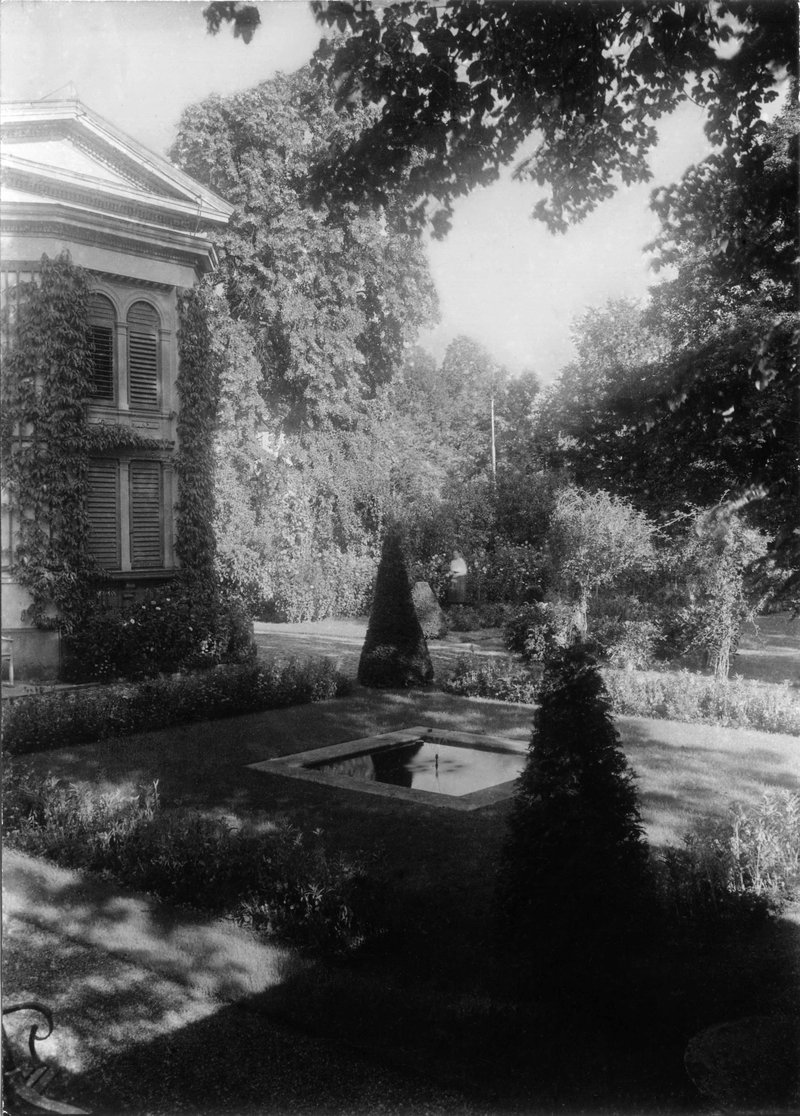
The garden of the Villa Flora around 1920
Work on the garden began in 1916. It too was to be given a new, modern look. The reason for this was the purchase of three large sculptures by Aristide Maillol, two of which were to be placed outside. Hedy Hahnloser's cousin Richard Bühler, who was president of the Swiss Werkbund, helped with the planning of the garden. Bühler had already worked intensively on garden design, and as he and the Hahnloser couple had very similar tastes, they were happy to incorporate his ideas and sketches for the outdoor area.
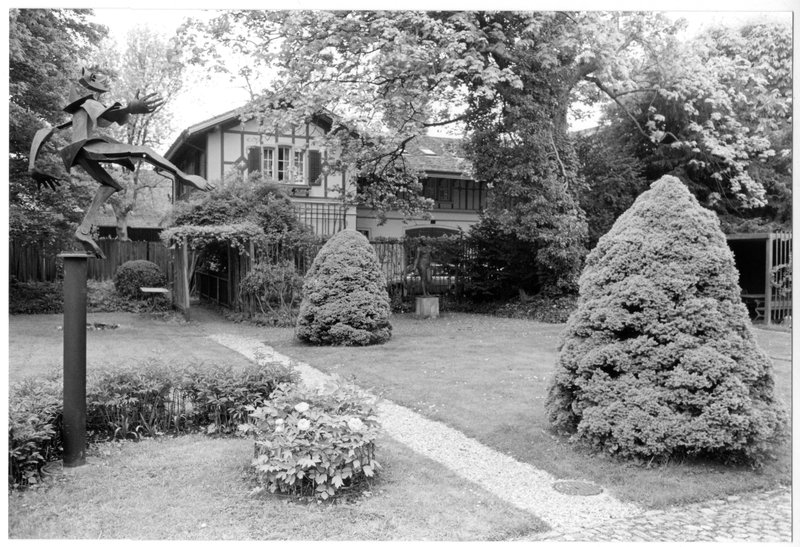
The view of the garden and coach house, around 1990
The garden was redesigned with geometric, rectangular patterns. Its previous design had followed the concept of a landscape garden of the so-called 'natural garden style', in which winding paths and artificial hills dominated. Following the latest design principles, the entire garden was now divided into linear patterns. The paths of the landscape garden were straightened and brought into an orthogonal relationship with each other. A square fountain was placed on the axis of a quadrangle of lawn adorned with flowers and brought into a linear relationship with the sculptures.
In 1927 – again in close collaboration with Robert Rittmeyer – the intermediate wing above the salon, i.e. the connection between the villa and the extension, where there had previously been a terrace, was renovated. A completely new room was created here, the so-called gallery, and a glazed veranda was built facing the garden.
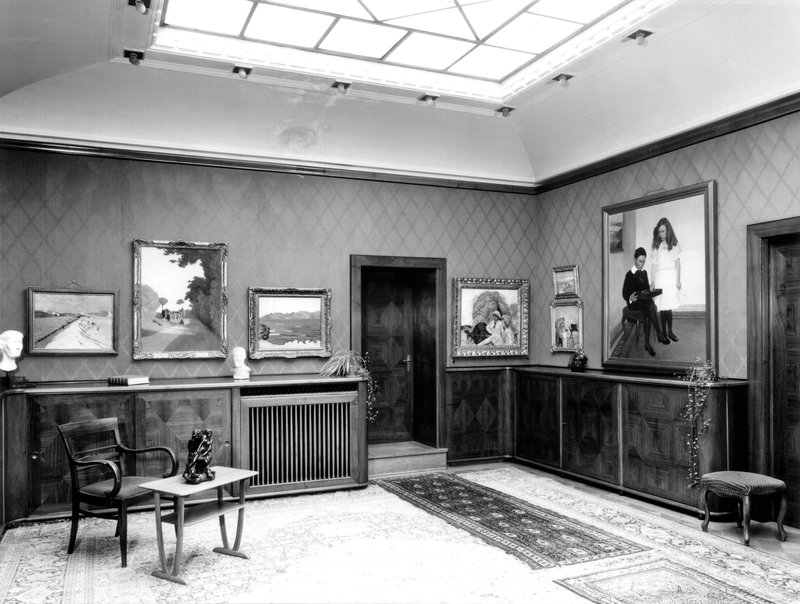
The skylight room in a historical photograph with works primarily by Félix Vallotton
As the Hahnlosers' art collection had grown considerably in the meantime, they were able to hang only some of their pictures – new walls were needed. The new room on the upper floor was therefore designed entirely for the presentation of works of art, and like a museum hall, it was given a skylight. The focus here was no longer on living, but on presenting and viewing paintings. With it, the Villa Flora became a house of art in its entirety.
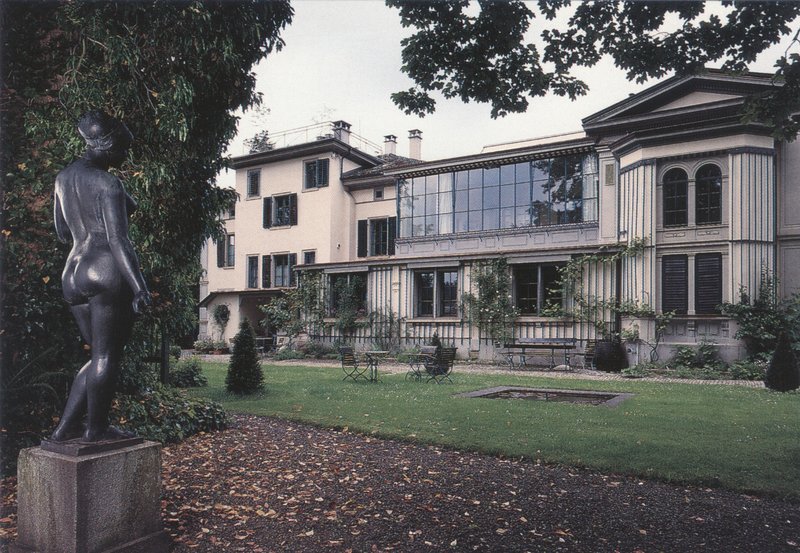
View of the Villa Flora from the garden
Foto: Peter Engeler
After the death of Arthur and Hedy Hahnloser, the house remained in family ownership. In 1980, a foundation was set up and the collection and the house were placed in its care. After renovation work, the east wing of the Flora was opened as a museum in 1995, with the entrance on the street side via a small glazed extension in front of the salon. The museum was run by an association that organised numerous exhibitions. It lives on today as a friends' association. After almost twenty years, the museum was closed for financial reasons. Finally, a solution was found to preserve the villa as a publicly accessible place of art as part of the Winterthur Museum Plan: The Flora was merged with the Museum Oskar Reinhart and the Kunstmuseum Winterthur under one umbrella brand.
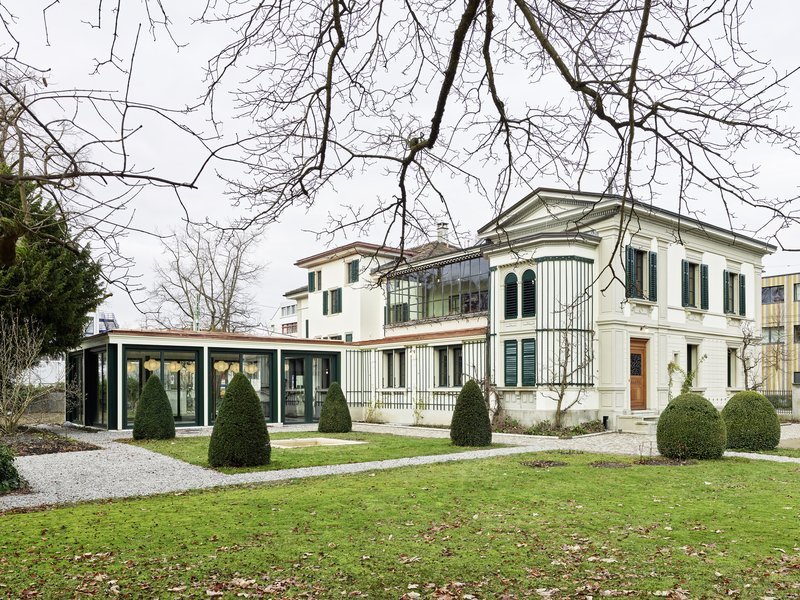
The freshly renovated Villa Flora 2023.
Foto: © Georg Aerni
With the incorporation of the Flora into the Kunst Museum Winterthur network, the entire building was restored and brought up to the latest museum standards. From now on, the entire building complex, including the main building, is accessible to visitors. A pavilion designed by Basel architects Jessenvollenweider on the garden side is now the new entrance. With this organisational and structural renewal, the Flora is now fit for the 21st century as a museum. We hope you like it!


